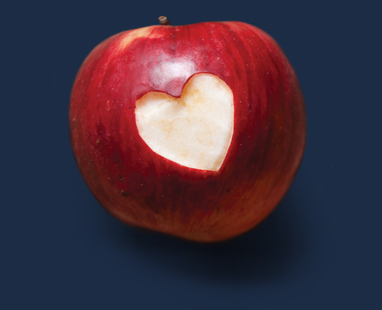Eating the Rainbow
Many of us are used to thinking about the almighty calorie when it comes to food. Many have even taken it further by keeping an eye on grams of fat, carbs and even protein when it comes to making food choices.
Most of us overlook the importance of making our food choices by colour.
I’m not talking about the dazzling array of synthetic colours that we see in a handful of M&Ms or Skittles. I’m talking true, honest-to-goodness natural colours found in whole foods – the deep red of a beet, the brilliant yellow of a squash and the rich violet of a ripe blueberry.
Why eat more colour?
On a scientific level, these natural colours in foods are a sign of the phytonutrients they contain. It is these phytonutrients offer long-term health protection against disease! They help reduce inflammation, balance stress response and even help with insulin sensitivity.
Variety is the name of the game
Plants contain more than 1000,000 (known) phytonutrients. To reap all the benefits, we need variety in our diet. Variety helps boost the power of phytonutrients because some compounds are known to synergise better with others. ie certain compounds are fat-soluble and need healthy fats to be absorbed while other foods work best best when eaten together.
A couple of my favourite combinations include:
- Turmeric is best when black pepper and oil are included
- Lemon juice added to green tea keeps the protective polyphenols active longer
- Before you toss that burger patty on the grill, add rosemary to reduce the carcinogens produced in the grilling process.
“Eating the rainbow” also helps prevent food boredom (which can trigger binge eating); reduces sweet cravings and minimizes body fat storage. Read the Colour food Chart below to see how many foods you can enjoy!
Colorful Fruits and Vegetables, Phytonutrients and Their Benefits:
Sources: The American Cancer Society, The National Cancer Institute and the U.S. Department of Agriculture
Color: Yellow/Orange
- Phytochemicals: Beta-carotene, bioflavonoids
- Benefits: Boosts immune system; improves vision health; reduces risk of cancer and heart attacks; improves skin, bones, teeth; helps with ovulation regularity
- Found in: Carrots, sweet potatoes, yams, pumpkin, butternut squash, cantaloupe, mangos, apricots, peaches, oranges, lemons, tangerines, papaya, nectarines, pineapple, yellow peppers Beta-carotene, bioflavonoids
Color: Red
- Phytochemicals: Lycopene, capsanthin, anthocyanins
- Benefits: Reduces risk of heart attack and diabetes; improves circulation and memory function; helps prevent breast, skin and prostate cancer; helps control high blood pressure
- Found in: Tomatoes, watermelon, pink grapefruit, raspberries, cherries, strawberries, cranberries, beets, red apples (with skin), red grapes, red cabbage, red onion, radishes, red peppers, pomegranates
Color: White
- Phytochemicals: Allicin, flavonols
- Benefits: Boosts immune system; helps lower cholesterol and blood pressure; reduces the risk of heart attack; helps prevent cancer cells from spreading
- Found in: garlic, onions, leeks, scallions, ginger, jicama, chives, mushrooms, apples, pears
Color: Green
- Phytochemicals: Chlorophyll, lutein, zeaxanthin, folate
- Benefits: Helps reduce vision impairment and macular degeneration; supports strong bones and teeth; reduces the risk of cancer/tumor growth; improves joints and reduces inflammation; aids in digestive regularity Found in: Leafy greens, lettuces, and green vegetables such as kale, spinach, turnip greens, collard greens, broccoli, peas, Brussel sprouts, bok choy, arugula, Swiss chard, watercress, kiwi, honeydew
Color: Blue/Purple
- Phytochemicals: Anthocyanin, quercetin, phenolics
- Benefits: Reduces the risk of cancer and heart attacks; improves longevity and protects against memory loss/cognitive dysfunction; improves joint movement and reduces inflammation; supports urinary tract health; helps reduce high blood pressure, prevents complications from diabetes
- Found in: Blueberries, blackberries, grapes, prunes, plums, raisins, figs, purple kale, purple cabbage, eggplant


